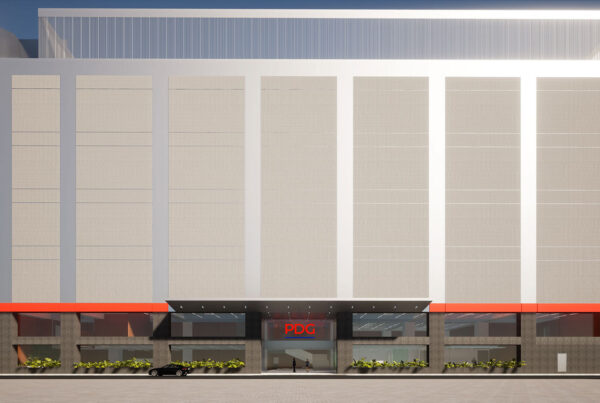Warburg Pincus, Princeton Digital Group foretell Asia's data center future
Once a niche alternative investment, data centers have quickly emerged as a lucrative asset class, executives from Warburg Pincus and Singapore-based Princeton Digital Group (“PDG”) said in the opening session of Mingtiandi’s MTD TV data center series on Tuesday.
Despite challenges ranging from policy to infrastructure, the sector has gained fresh impetus from the COVID-19 pandemic, which has served as a catalyst for demand that was already on the rise. Given the region’s shift toward 5G mobile networks and cultivation of native digital enterprises, APAC is set to become the biggest data center market in the world within a few years.
“[The cloud] is almost irreversible. All the digitization the world has embarked on is yet to happen,” said Singapore-based data center developer Princeton Digital Group chairman and CEO Rangu Salgame. “In the coming years we’ll just see an accelerated drive towards the cloud.”
Inevitability of the Cloud
The concept of running businesses from home, as well as shopping and entertaining over the Internet already existed in January 2020; COVID simply accelerated adoption of these cloud-enabled practices, Salgame stated. Research by Cushman & Wakefield backs up the entrepreneur’s assertion, with the consultancy predicting in 2019 that Southeast Asia’s data center sector would see a compounded annual growth rate (CAGR) of 13 percent through 2024.
Ellen Ng, Managing Director and Head of Real Estate for China at American private equity titan Warburg Pincus agrees, noting that the North American data center sector is that market’s best performing asset class and that the trends are even more compelling in APAC.
“We have two billion internet users across APAC — seven times that of the US and only 10 percent of the data storage capacity of mature markets,” she noted. “We’re still in the very early innings of the market. It’s undersized and fragmented, and there’s room for different strategies and parties to do well.”
Demand from Internet giants such as Microsoft, Amazon, Alibaba and Tencent for server facilities which would allow them to supply cloud services to both businesses and consumers, were one of the driving factors that led Salgame, formerly a divisional CEO with India’s Tata Group, to establish PDG together with Warburg Pincus in 2017.
Since that time, the partners have worked together to establish a portfolio of 18 data centers across India, Singapore, Indonesia and China, with plans for more expansion in the works.
“We saw a market need for a pan-Asian data center operator,” said Salgame, who held senior positions at Cisco Systems and Verizon before joining Tata. “Internet companies were significantly scaling their investment in Asia and they were looking for the quality of services they were used to in Western markets.”
Capitalizing a Fast-Growing Sector
With COVID putting pressure on traditional retail and denting demand for office assets investors are paying renewed attention to data centers as one of the most future-proof real estate opportunities. A CBRE report from earlier this year found that 30 percent of investors in APAC were looking at data centers this year, up from 18 percent in 2019.
While interest is on the rise, the segment’s high costs of entry and technical demands are drawing attention to the need for sector-specific expertise. Ng noted that while new investors understand demand drivers and the long-term growth potential of date centers, many don’t fully appreciate the intricacies of operations, the intensity of capex required and local policy requirements.
Scaling a data center portfolio is also hampered by scarcity of existing stock, particularly in emerging markets, compelling investors to take on added development risk.
“The pathway to scale is different from other asset classes. A single data center project can be 10 to 15 warehouses in terms of capex deployment, so you don’t need to source 15 parcels of land,” Ng said. “However, it’s is a large stake in each project, hence the bar is higher and margin for error is lower.”
Ng, who has played a key role in earlier Warburg Pincus-backed ventures in the region, including IT office park owner-operator D&J China, asset managers ARA and Kailong added that for data centers, “It’s not just land. You need external power, you need licenses, to build relationships with local carriers, and [maintain] a high standard of operations to serve sophisticated customers. Barriers to entry are much higher than other asset classes.”
To expand PDG, Salgame noted that the company has taken a three-pronged approach to establishing new projects.
The company’s strategy combines acquisitions, such as its buy out of the former IO Data Centers in Singapore; carve-outs created from existing telecoms operators relinquishing control of centers due to avoid new capital expenditures, such as its takeover of XL Axiata’s five facilities in Indonesia; and ground up brown- and greenfield development, such as it has undertaken in Shanghai and Mumbai.
By varying its approach to suit the market, the tech industry veteran points out that PDG has abbreviated the “long process of getting the product in the market,” enabling it to offer clients access to a pan-regional data platform.
A Bright Digital Future
Warburg’s Ng points to robust fundamentals setting the stage for continued data center, and notwithstanding the sector’s complexity, predicts that Asia’s market for server facilities will continue to grow in parallel with the region’s increasingly digital economies.
Salgame expects that, with demand growing from the company’s key clients, PDG will continue to expand in China, as well as India, the Philippines, Indonesia and up to eight other countries.
“Demand is obvious; the macro trends are obvious,” Ng noted “The execution challenges are varied across markets, but once you penetrate a market they become very defensive positions, which is why we like the sector,” finished Ng.
Mingtiandi’s data center series is set to continue on 27 October with a panel discussion bringing together more fund managers and advisors active in the sector, and the forum will conclude on 3 November with another panel led by data center operators and service providers.
As published by Mingtiandi







